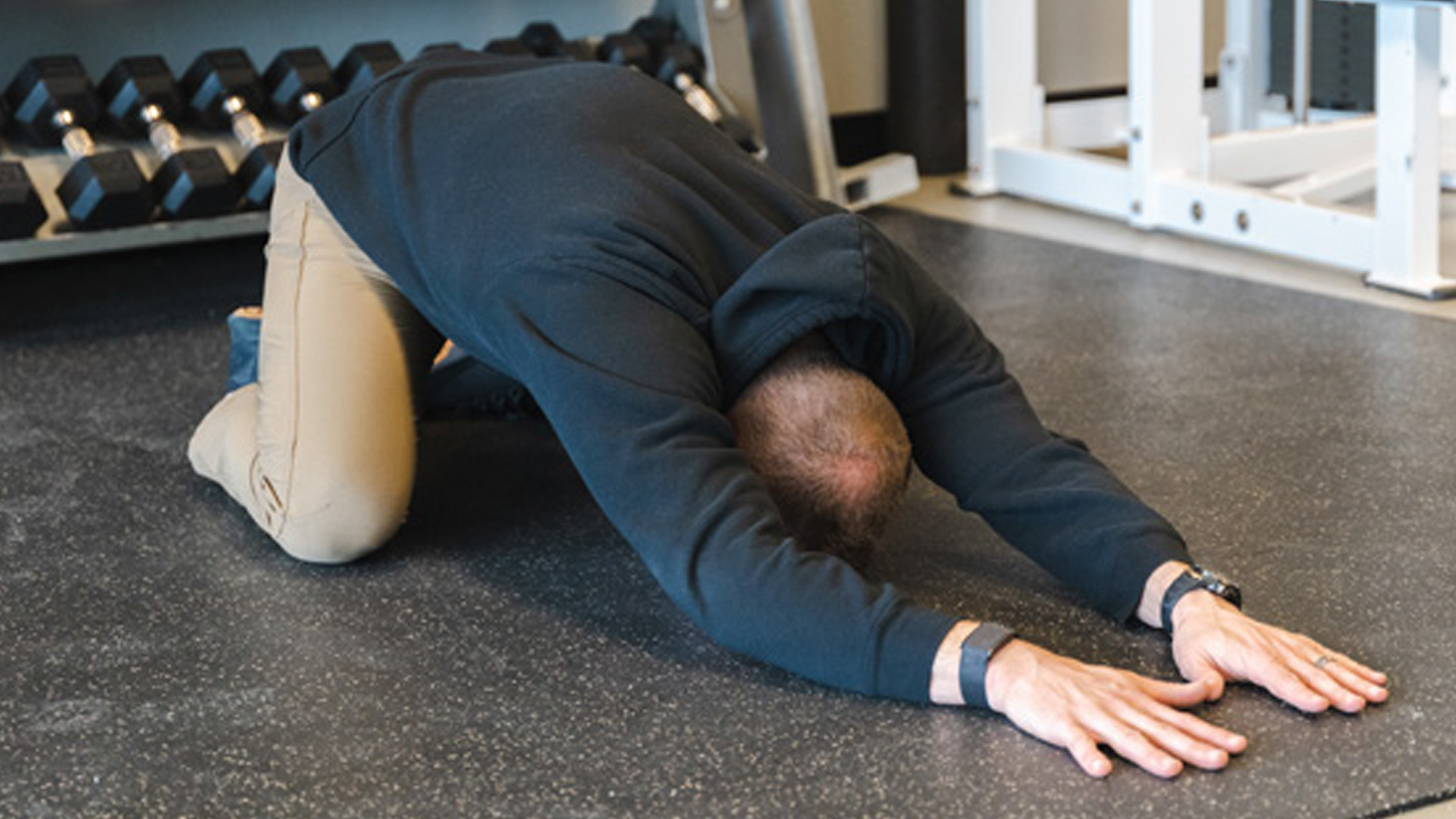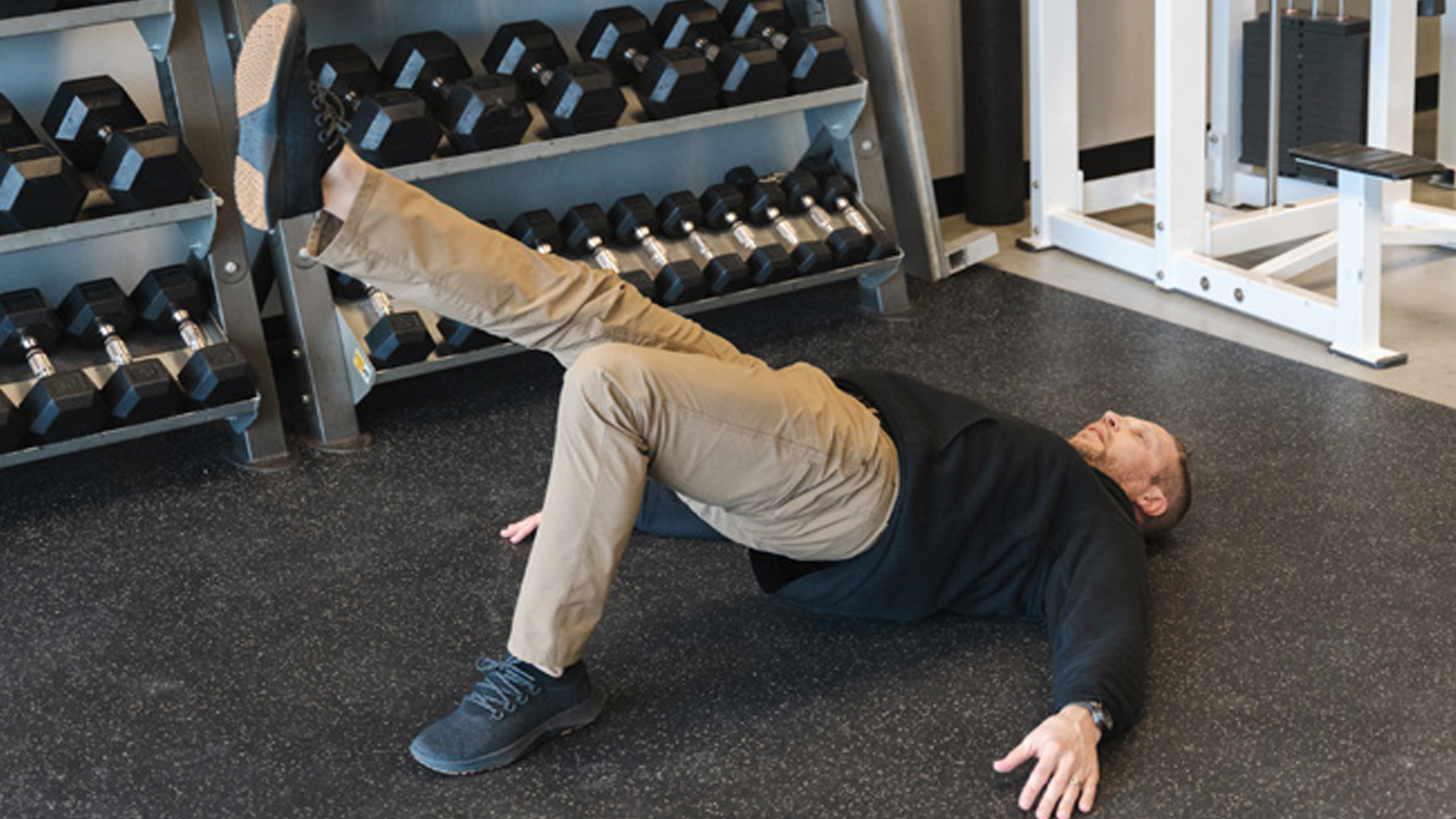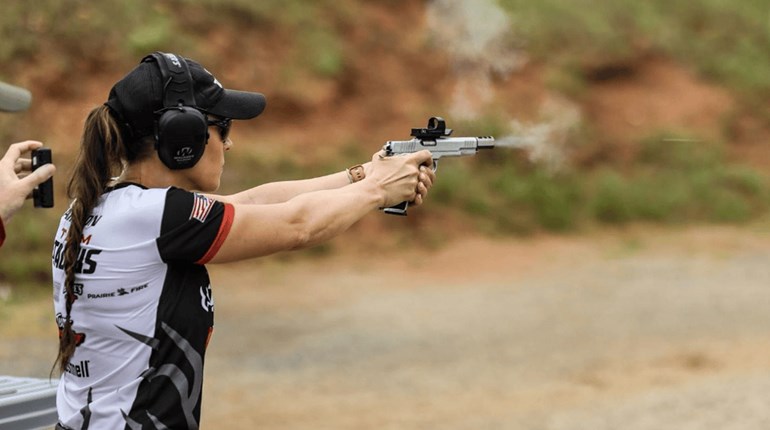
You’ve been doing your dry-fire practice and going to the the gym, preparing for the upcoming sectional or regional competition—then one week before the shoot, it happens. Getting out of bed, you feel a sudden sharp shooting pain in your low back, and now every movement cripples you in pain. Over the age of 40, it seems you can tweak your back doing almost anything.

Believe me, I understand. As you can see in the picture above, I have a “healthy” case of scoliosis. I’ve dealt with low back pain on and off for most of my life. However, this crooked gift has taught me a lot about bulletproofing your low back and becoming more resilient.
There are a few things you can do to prevent this from happening. Just a handful of stretches and some simple stability drills—done consistently—can help bulletproof your low back and even help you move explosively on the course.

First, let’s look at the simple stretches. Level one is simply to maintain a healthy range of motion in your four corners, your hips and shoulders. If any of these areas are tight, then nine times out of 10, your body can't stabilize and you’ll have low back issues.

There are four simple yoga stretches I have all my clients do: child’s pose, floor pec stretch, half kneeling hip flexor and pigeon. These are simple and can be seen in the photos. The child’s pose lengthens the spine and stretches the lats, the big muscles in your upper back. Pec stretch on the floor opens up your chest and relaxes your shoulders so your posture improves. Half kneeling hip flexor stretch should be felt on the front side of your hips and ease the strain on your lower back. Finally, pigeon stretch can be felt through your glutes and will ease any lower back discomfort.

Now that you’ve stretched yourself out and opened up your four corners, you need to do some strength and stability work. It’s important to do this after stretching, because it will teach your body to stabilize without tightening up what you just stretched. I like to start with single-leg bridging for the glutes. If you think about it from a structural point of view, your glutes are the foundation of your spine, so if you can create a stronger base, your spine will have more stability. With glute bridging, it’s important to focus on driving through the heel and squeezing your backside for a second at the top. Don’t just rip through your reps; this typically causes people to lose focus on the glutes and create movement in the lower back, which is not what you want.

Next, it’s time to create some core stability. Since many USPSA competitors are pistol shooters, let’s make this specific to action shooting. I recommend practicing your draw or just punching out from your chest and acquiring front sight in a narrow half-kneeling position. However, try to line up your front foot with your back knee, as though you’re on a railroad track. This should challenge your balance quite a bit, and that’s a good thing. It teaches your body to stabilize. Be sure to do both sides.

I use these exact stretches and strength movements for all my clients, from middle-aged weekend competitive shooters to younger pro athletes. Opening your four corners and building some spinal stability guarantees you won’t miss another competition, and you’ll move explosively and more efficiently on the course.
Article from the March/April 2023 issue of USPSA’s magazine.


































